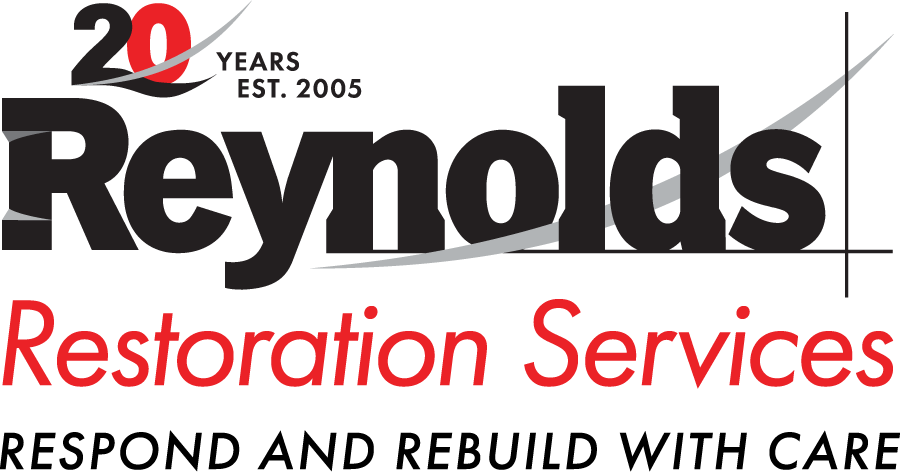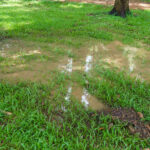Spring storms can bring heavy rain, strong winds, and hail, posing a threat to homes and businesses. Without proper preparation, they can cause significant damage, leading to costly repairs and disruptions. Fortunately, taking proactive steps now to prepare for spring storms can help protect your property and ensure the safety of your family or employees.
With 20 years of experience, Reynolds Restoration Services has helped countless property owners in Harrisburg, Baltimore, Philadelphia, and surrounding regions recover from storm damage. Here’s how to safeguard your home or business before the next storm strikes.
Inspect and Strengthen Your Home’s Exterior
Your roof, siding, and windows are your first line of defense against severe weather. Over time, these areas can develop weaknesses that make them more susceptible to damage. Conducting a thorough inspection before storm season can help you address potential issues before they become costly problems.
Roof Inspection
Your roof takes the brunt of storm damage, from high winds to pounding rain. A compromised roof can lead to leaks and structural damage inside your home or business.
- Look for missing, cracked, or curling shingles. If you spot any, replace them immediately to prevent leaks.
- Check for signs of water damage, such as dark spots or sagging areas, which may indicate underlying issues.
- Clean gutters and downspouts to prevent water buildup that can cause roof and foundation damage.
Siding and Windows
Damaged siding and poorly sealed windows can let in moisture, leading to mold, mildew, and water damage.
- Inspect your siding for cracks, holes, or loose panels. Secure any loose sections and seal gaps with weatherproof caulk.
- Ensure windows close and seal properly. If you notice drafts, consider adding weatherstripping to improve insulation.
Reduce Storm Hazards in Your Yard
Your landscaping can either protect or endanger your home during a storm. High winds can turn trees, furniture, and loose debris into projectiles, causing significant damage.
- Trim tree branches that hang over your home, driveway, or power lines. Weak branches are more likely to break off during a storm, causing roof damage or power outages.
- Remove dead or unstable trees before they become a hazard. A tree removal specialist can assess whether a tree poses a risk.
- Secure outdoor furniture, grills, and lawn decorations. If possible, store them indoors before a storm hits. Otherwise, anchor them securely to the ground.
- Inspect fences and sheds to ensure they are properly secured. High winds can easily tear apart weak structures, creating additional debris.
 Improve Drainage to Prevent Flooding
Improve Drainage to Prevent Flooding
Flooding is one of the most common and costly consequences of spring storms. Poor drainage around your home can lead to water pooling near your foundation, increasing the risk of basement flooding and structural damage. Consider ways to improve drainage to prepare for spring storms.
Yard Grading
Proper yard grading directs water away from your home rather than allowing it to collect around the foundation. If you notice standing water after rain, consider regrading your yard to improve drainage.
Drainage Systems
- Ensure your French drains, swales, or other drainage systems are free of debris and functioning properly.
- If your yard has persistent drainage issues, a professional landscaper can help install additional solutions to redirect water.
Downspout Extensions
- Downspouts should extend at least six feet away from your home to prevent water from seeping into the foundation.
- Consider adding a rain barrel to collect excess water and reduce runoff.
Prepare for Power Outages
Severe storms often lead to extended power outages, which can disrupt daily life and pose safety risks. Taking steps to prepare for spring storms and a power loss can help you stay comfortable and safe.
Backup Power Plan
- Invest in a generator to keep essential appliances running, such as refrigerators, sump pumps, and medical equipment.
- Use surge protectors to safeguard electronics from power surges caused by lightning strikes.
- Keep extra fuel on hand for portable generators, but store it safely in accordance with local fire codes.
Emergency Supplies
A well-stocked storm preparedness kit can make a significant difference during an extended outage.
Your emergency kit should include:
- Flashlights and extra batteries
- First-aid supplies, including bandages, antiseptic, and necessary medications
- Bottled water and non-perishable food for at least three days
- A battery-powered or hand-crank weather radio for emergency updates
- Portable chargers or power banks for cell phones and essential devices
- Important documents stored in waterproof containers or digital backups
 Review Your Insurance Coverage
Review Your Insurance Coverage
Understanding your insurance policy before a storm hits can make the recovery process smoother. Many homeowners are unaware of the gaps in their coverage until they file a claim.
- Review your homeowner’s or business insurance policy to ensure it covers storm damage, including wind and flooding.
- Document your home’s current condition by taking photos and videos of your property. This can provide crucial evidence for insurance claims.
- Store digital backups of insurance documents and receipts in a cloud-based system for easy access after a storm.
Post-Storm Cleanup and Restoration
If your property sustains storm damage, acting quickly can prevent further issues and expedite recovery. Follow these steps after a storm:
- Inspect your home for damage. Check your roof, siding, windows, and basement for leaks, missing shingles, or structural issues.
- Document everything. Take clear photos and videos of all damage before making any temporary repairs.
- Avoid DIY fixes for major damage. While minor issues like cleaning up debris can be handled independently, significant damage should be assessed by professionals.
- Contact a professional restoration service. Reynolds Restoration Services specializes in storm damage assessment, water removal, and structural repairs. Quick response can help prevent secondary damage like mold growth.
Trust Reynolds Restoration Services for Fast, Reliable Storm Damage Repairs
When storms strike, immediate action is crucial to prevent further damage. With over 20 years of experience, Reynolds Restoration Services provides 24/7 emergency response to homeowners and businesses in Harrisburg, Baltimore, and Philadelphia. Unlike national franchises, we are independently owned, allowing us to respond quickly and personally to every call. Our expert team specializes in storm damage assessment, water removal, and structural repairs—helping you restore your property as efficiently as possible.
Don’t wait until the next storm hits — it’s time to prepare for spring storms. If your home or business has suffered damage, contact Reynolds Restoration Services today for professional cleanup and repair. Let us help you recover quickly and safely.

President of Reynolds Restoration Services. Over 20 years of experience in the emergency restoration industry.


 Improve Drainage to Prevent Flooding
Improve Drainage to Prevent Flooding Review Your Insurance Coverage
Review Your Insurance Coverage